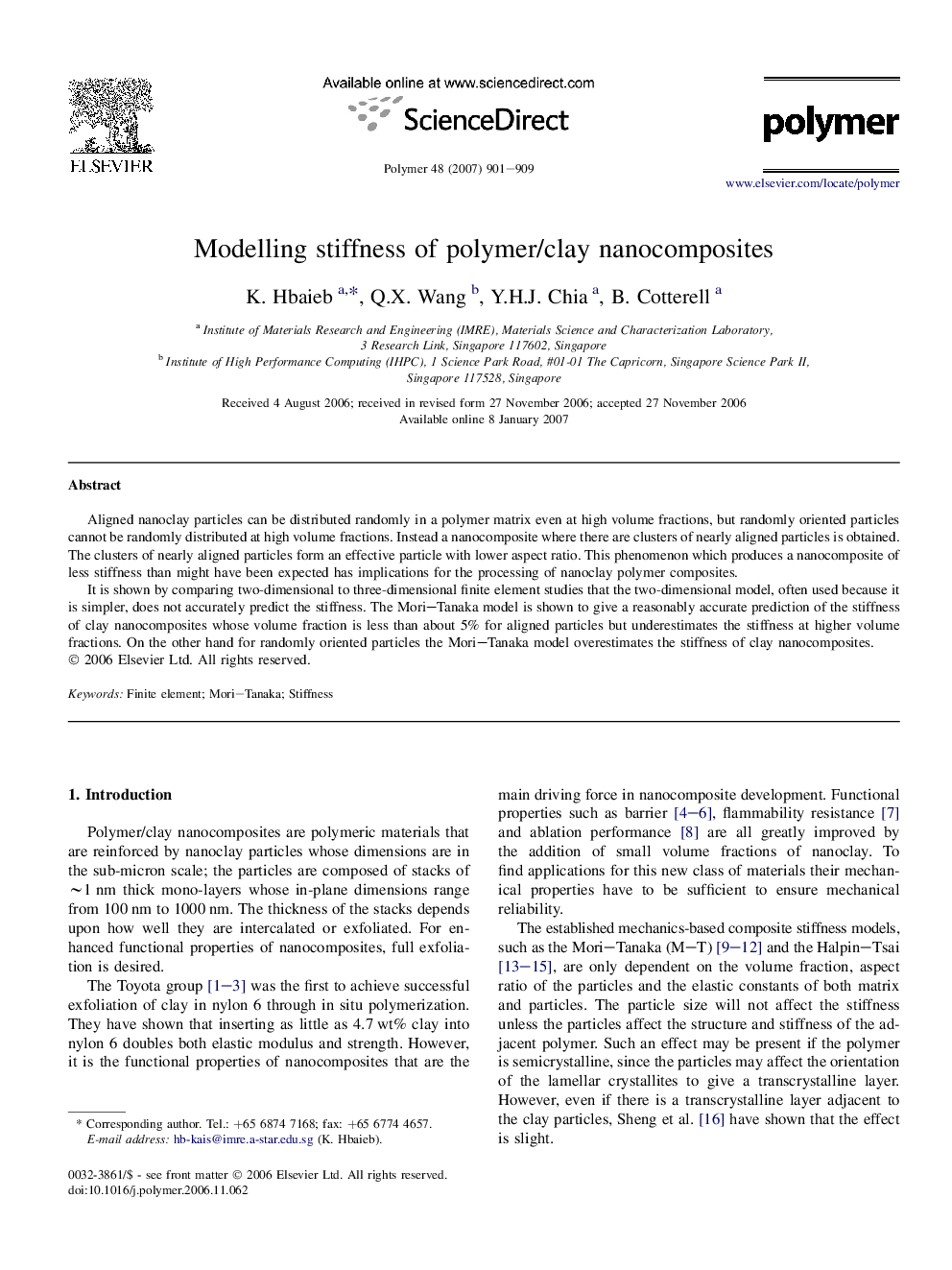| Article ID | Journal | Published Year | Pages | File Type |
|---|---|---|---|---|
| 5186305 | Polymer | 2007 | 9 Pages |
Aligned nanoclay particles can be distributed randomly in a polymer matrix even at high volume fractions, but randomly oriented particles cannot be randomly distributed at high volume fractions. Instead a nanocomposite where there are clusters of nearly aligned particles is obtained. The clusters of nearly aligned particles form an effective particle with lower aspect ratio. This phenomenon which produces a nanocomposite of less stiffness than might have been expected has implications for the processing of nanoclay polymer composites.It is shown by comparing two-dimensional to three-dimensional finite element studies that the two-dimensional model, often used because it is simpler, does not accurately predict the stiffness. The Mori-Tanaka model is shown to give a reasonably accurate prediction of the stiffness of clay nanocomposites whose volume fraction is less than about 5% for aligned particles but underestimates the stiffness at higher volume fractions. On the other hand for randomly oriented particles the Mori-Tanaka model overestimates the stiffness of clay nanocomposites.
